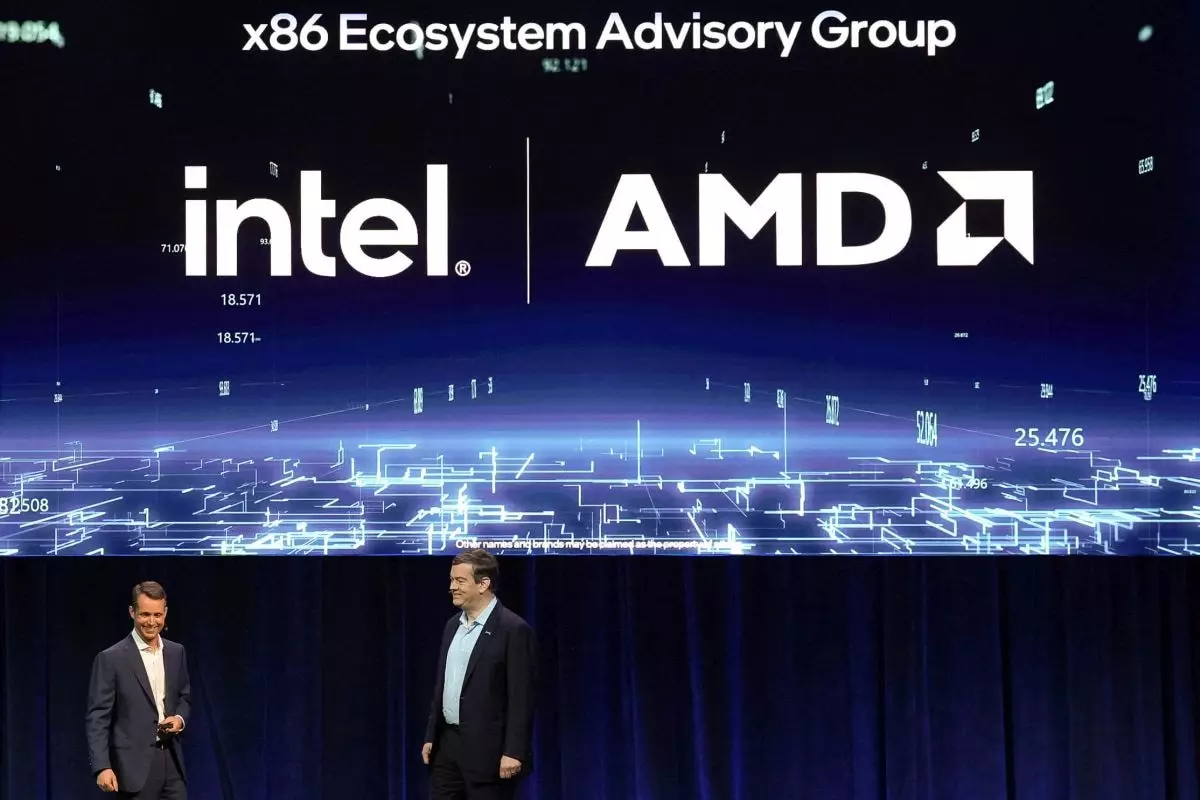In a groundbreaking move announced at the OCP Global Summit in California, tech giants Intel and AMD have put aside their traditional rivalry to form an x86 Ecosystem Advisory Group. This partnership aims to reshape the future of the x86 architecture, which has long dominated the computer processing landscape since its inception in the late 1970s. As competition from Arm chips intensifies in the market—especially with Arm’s recent advances in performance and affordability—the collaboration seeks to address the challenges posed by this new rival, ensuring continued relevance and compatibility in the rapidly evolving tech ecosystem.
The announcement of the x86 Ecosystem Advisory Group comes at a time when Intel and AMD are experiencing declining market shares due to the encroachment of Arm-based processors. While x86 architecture has historically been synonymous with personal computers and servers, the landscape is changing, showcasing the increasing adoption of powerful Arm processors, like Apple’s M-series chips and Qualcomm’s Snapdragon X-series. The introduction of competitively priced Arm devices, including the recently launched Snapdragon X Plus, at price points below $800, bodes well for Arm’s future, drawing attention away from x86 processors.
As businesses and consumers alike seek more performant and cost-effective solutions, Arm’s approach to compatibility across different hardware systems—mandating that all chipmakers supporting its architecture provide consistent software support—gives it a significant advantage. In this context, Intel and AMD’s advisory group sets out to combat this trend, striving for a collective strategy to maintain unified support and interoperability within the x86 ecosystem.
The newly formed advisory group brings together industry heavyweights, including hardware and software experts from Lenovo, Dell, Google, Microsoft, HP, and others. Their mission is to create a more unified set of instructions and architectural interfaces for x86 processors, meaning that software can run seamlessly across different hardware from various manufacturers. This initiative signals a commitment to fostering collaboration in an industry that has often favored competition over partnership.
The stakes are high. If the group can successfully create a more cohesive x86 framework, it would lead to better software compatibility across devices, enhancing the functionality of PCs, cloud services, data centers, edge computing, and embedded systems. Such progress would likely accelerate the integration of innovative features across the x86 platform, benefitting developers and end-users alike.
The composition of the advisory group lends credibility to this initiative. High-profile industry leaders like Linus Torvalds, the creator of the Linux kernel, and Tim Sweeney, CEO of Epic Games, have joined the group, indicating a strong commitment to advancing the x86 ecosystem. Their involvement promises considerable insight into user needs and emergent technological trends, which are crucial for the evolution of hardware and software compatibility.
Intel and AMD lead the charge, with their CEOs delivering optimistic messages about the potential impact of this collaboration. Intel’s Pat Gelsinger highlighted the critical shift in x86 architecture, emphasizing the importance of adaptation to meet current demands and future developments in technology. Similarly, AMD’s Lisa Su pointed to the need for ongoing evolution to maintain x86’s status as a compute platform of choice for developers and customers.
While the intent behind the x86 Ecosystem Advisory Group symbolizes a strategic pivot towards collaboration, the actual execution of this initiative will pose its own set of challenges. Harmonizing standards across diverse technological backgrounds and securing buy-in from all participating entities will require careful negotiation and a willingness to align individual company strategies with collective goals.
However, if Intel and AMD can harness their combined expertise to create a more interconnected x86 ecosystem, they may successfully mitigate the competitive advantages that Arm currently enjoys. As the technology landscape continues to shift, the collaboration may serve as a defining moment for the future of x86 architecture, ensuring its sustainability in a market increasingly defined by the need for compatibility and innovation.
The formation of the x86 Ecosystem Advisory Group represents a significant chapter in the ongoing evolution of computing architectures. As Intel and AMD set aside competition in favor of collaboration, they aim to not only fortify their platforms against the rising tide of Arm but also redefine what it means to be part of the x86 ecosystem. The outcomes of this initiative may very well dictate the future architecture of computing, influencing everything from product design to software development in the years to come. As we await the next steps in this new partnership, one thing remains clear: innovation in the tech industry is often as much about collaboration as it is about competition.


Leave a Reply